Varieties and installation of facade cassettes
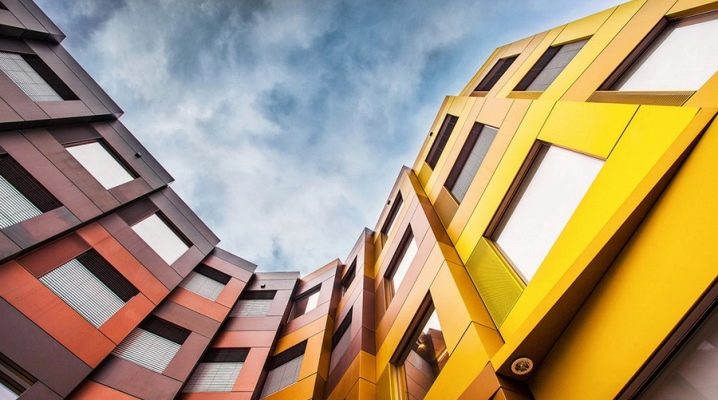
The variety of modern materials for finishing the facades of buildings is constantly being replenished with new products. Products of a new generation for external cladding have combined most of the positive qualities of existing materials, which led to their demand among consumers. These products include facade cassettes.
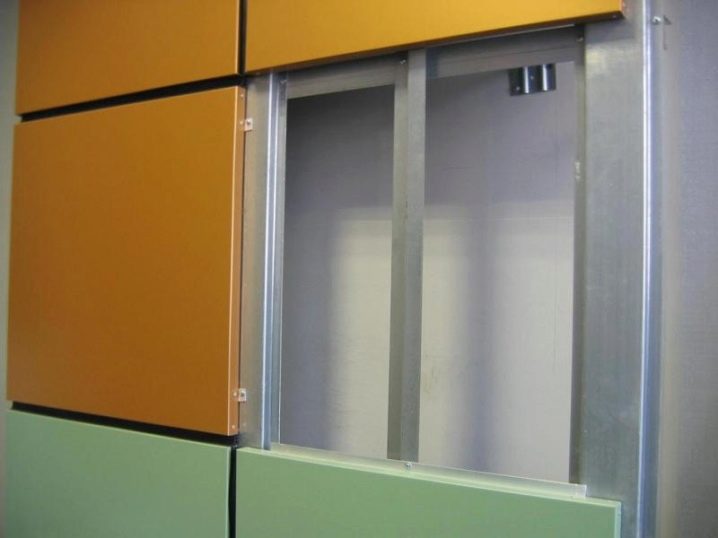
Features and specifications
Ventilated finishing material is often referred to as metal cassettes. The main feature of these products is their design - they are made in the form of a rectangle or square from different metals or raw materials alloys. The edges of the cassettes are bent inward, due to which they resemble a box. Such a box has special holes for fastening, as well as a bend in the upper part of the product. The bottom edge is engaging, it contains holes for the accumulated condensate to escape and for ventilation of the base.
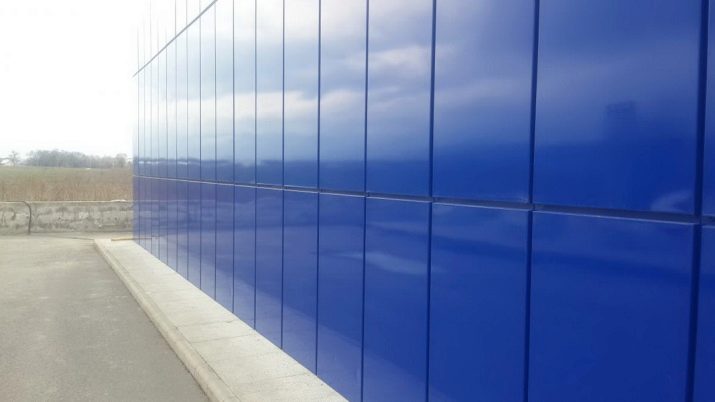
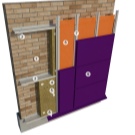
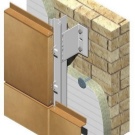
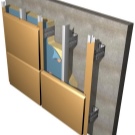
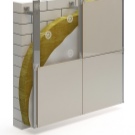
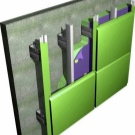
Installation of products to the wall is carried out using self-tapping screws or rivets. In addition to the main purpose, facade cassettes are used in the arrangement of hinged structures for various purposes.
The material is included in the group of building products for cladding, their application allows you to radically modify the external design of the building. In addition, the products create ventilated facades, improving the exterior and acting as a budget option when carrying out reconstruction works.

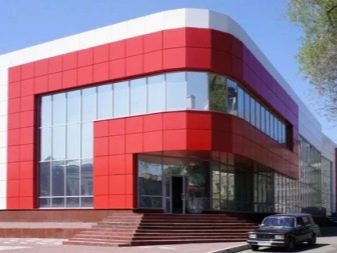

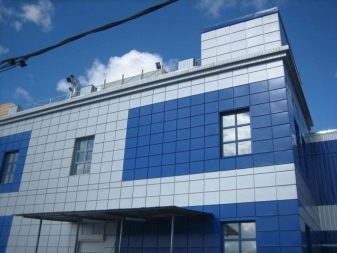
The products are sold complete with other components, the presence of which is required for fastening.
The set includes the following items:
- metal profile;
- slopes;
- wind panels;
- fastening crutches;
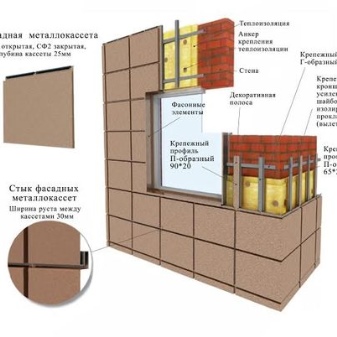
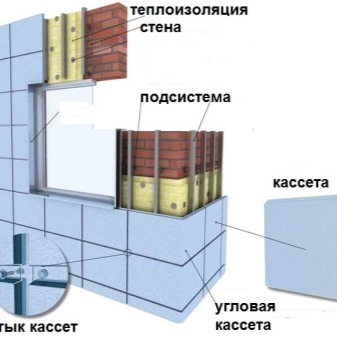
- platbands;
- products that hide the gaps during installation;
- corners used for mounting.
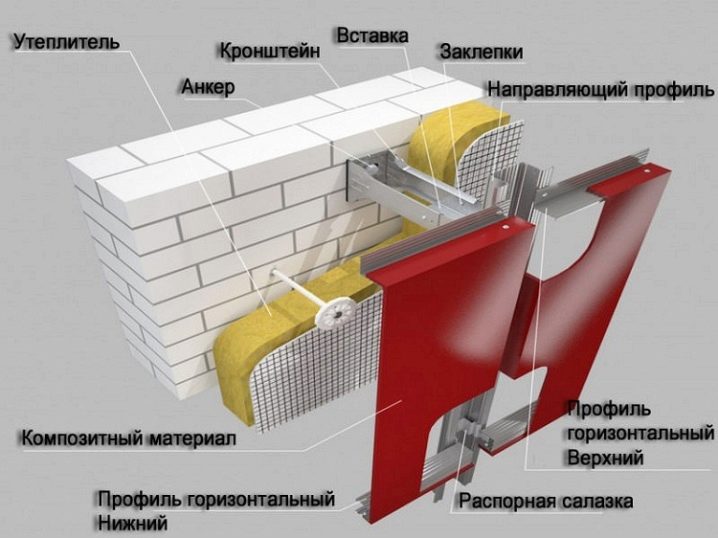
Advantages and disadvantages
Cassette products are in great demand.
This is explained by the presence of positive characteristics of the products:
- the durability of such a cladding;
- the strength of the elements, due to the specifics of manufacturing and the type of raw materials used;
- quick installation - assembly of the facade from cassettes is carried out in the shortest possible time, and there is no need to hire a professional team of builders to carry out the work;
- products provide excellent protection of the base from negative atmospheric phenomena - strong wind, precipitation, ultraviolet radiation;
- products are fire-resistant and tolerate temperature fluctuations well, including low temperatures;
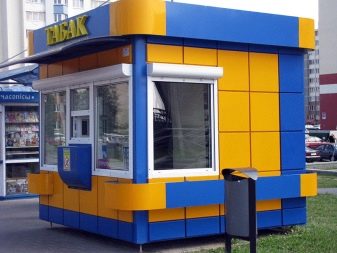

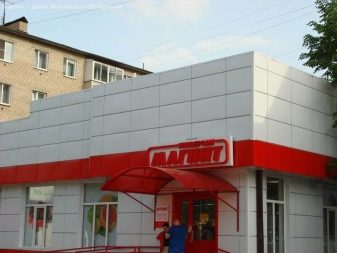
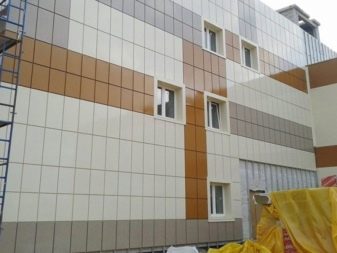
- cassettes, like linear facade panels, have a minimum load on the walls of the building, since they are lightweight;
- in the resulting space between the bases and products, you can perform thermal insulation or lay an additional layer of waterproofing, which will increase the comfort in the premises;
- the configuration of the material, due to their flat surface, can visually hide all defects in the walls of the building;
- in addition, cassettes can also be used for interior work.
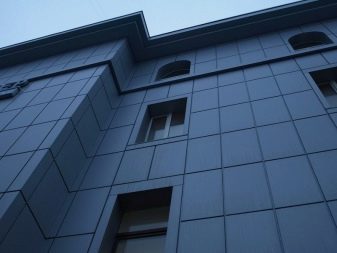
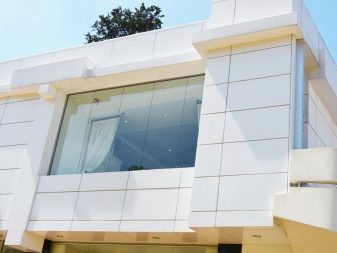
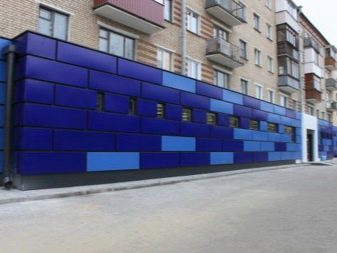
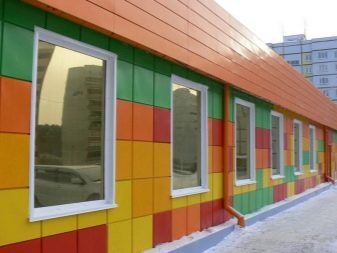
Each material has negative features, and facade cassettes have disadvantages that are inherent in each individual type of product.
Steel products are heavier than other types of products. Therefore, the use of steel cassettes will require the construction of a frame for the installation of elements.When finishing structures with such cassettes that do not have a solid foundation, there is a risk that the building will collapse from additional stress.
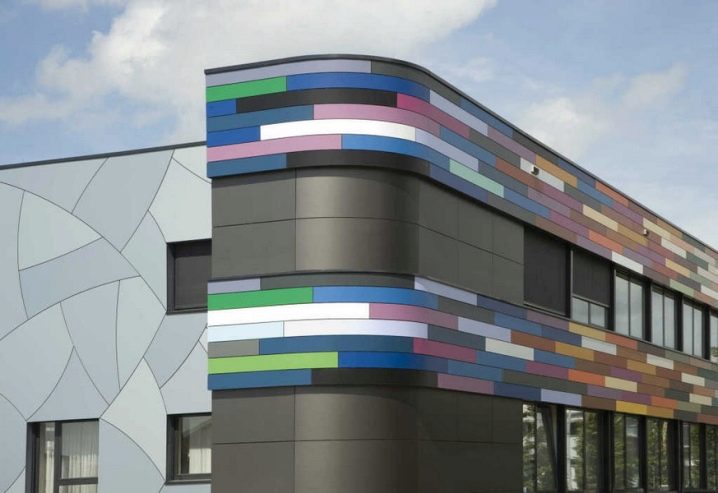
Aluminum facade cassettes have two drawbacks - high cost, as well as laborious transportation and specific requirements for storage conditions. This is due to a certain softness of raw materials, due to which, as a result of careless handling, you can damage the edges of the parts or make dents on the surface of the product. The presence of defects will adversely affect the subsequent installation of such cassettes.
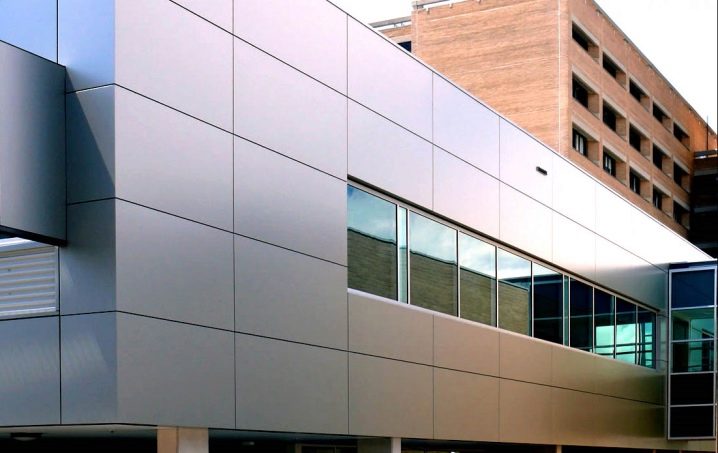
Composite products have low UV and heat resistance. Therefore, before purchasing this type of product, it is necessary to familiarize yourself with the recommendations of specialists regarding the temperature that they can tolerate without compromising the quality and aesthetics of the house.
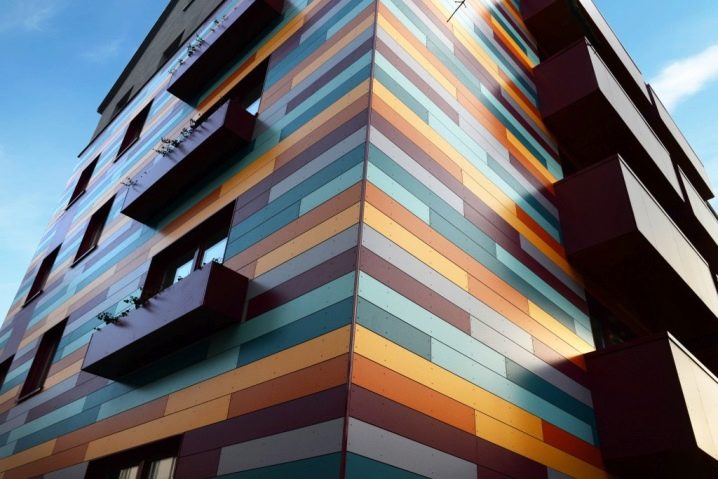
Panel manufacturing and device
The cassettes are produced exclusively in an industrial environment. Only a few Russian companies are engaged in the manufacture of such products in accordance with GOST. In the workshop, the production process is carried out using high technologies on the principle of a closed cycle.
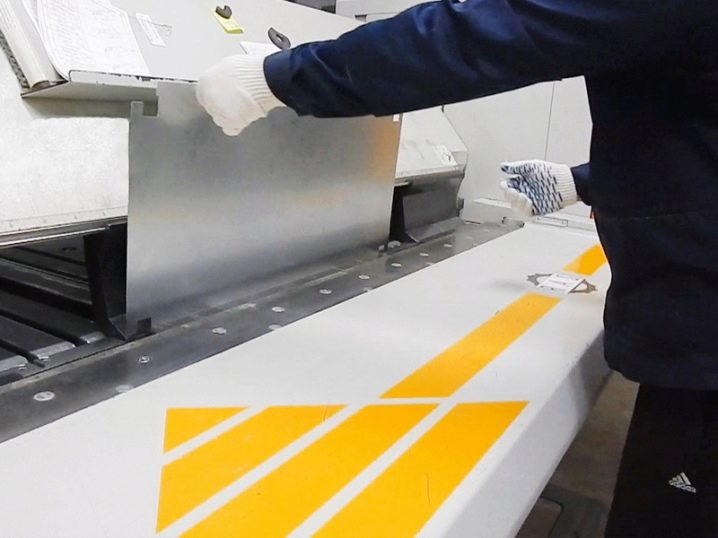
In essence, the very work on the creation of products consists in stamping a sheet of metal having a thickness of 0.5 to 1.5 mm. Cutting and bending equipment is used for production. As a result, box-shaped finished products are formed. Quality control of products is carried out at every stage of the technological process.
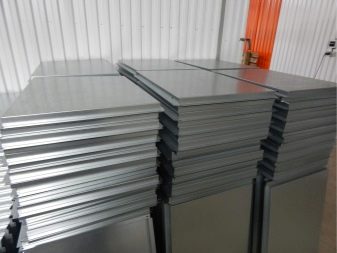

First of all, when starting to manufacture, the shapes and dimensions of the elements are determined. Dimensional accuracy is a very important nuance in production, since all components as a result form an integral structure with a large area, where each part must ideally fit the one installed next to it. Therefore, the production facilities are fully computerized.
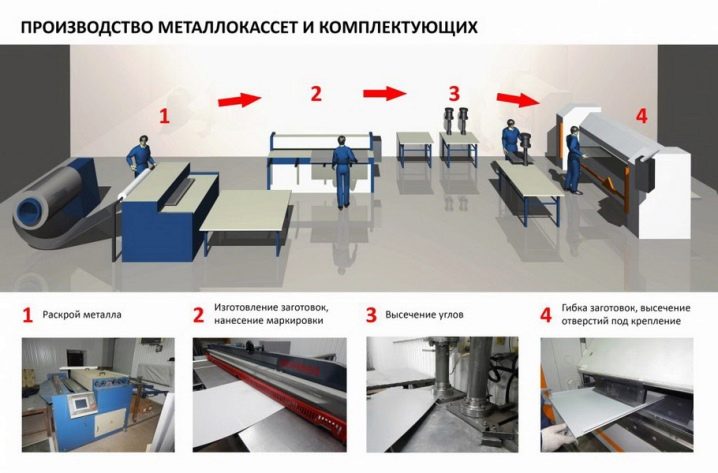
The cut material is sent to the next stage of production - in a corner cutting machine, which performs tasks for the design of corners and contours of cassettes. After completing these works, bending the workpieces is given the final shape. Products that came off the conveyor are already completely ready for installation, no additional processing is required for the elements.
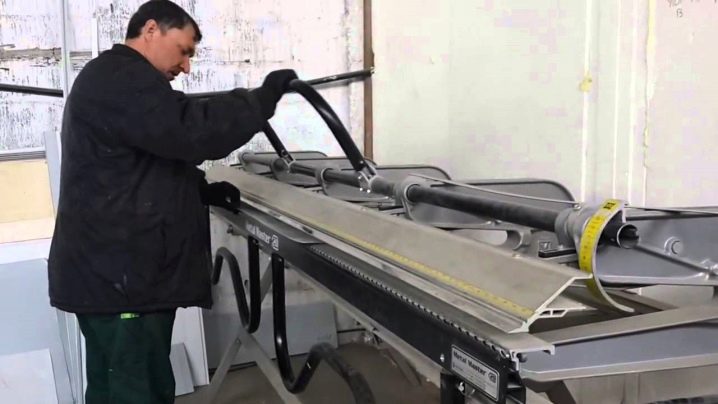
Insi metal cassettes are Russian products of this line of building materials. In addition, there are composite and aluminum products of the Alucobond and Puzzleton brands. The latter are available in a variety of shapes including angular, triangular and trapezoidal.
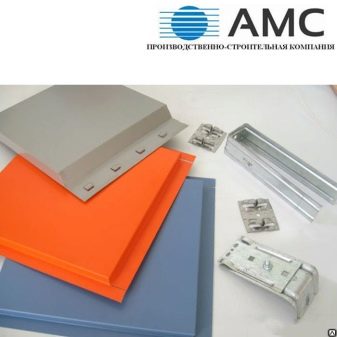
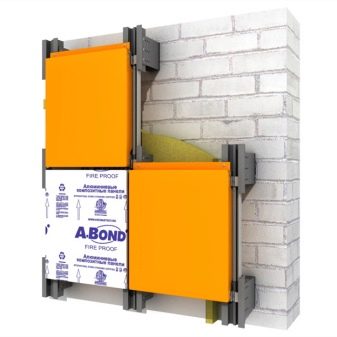
Views
Based on the raw materials used for the production of cassettes, products are steel, aluminum and composite.
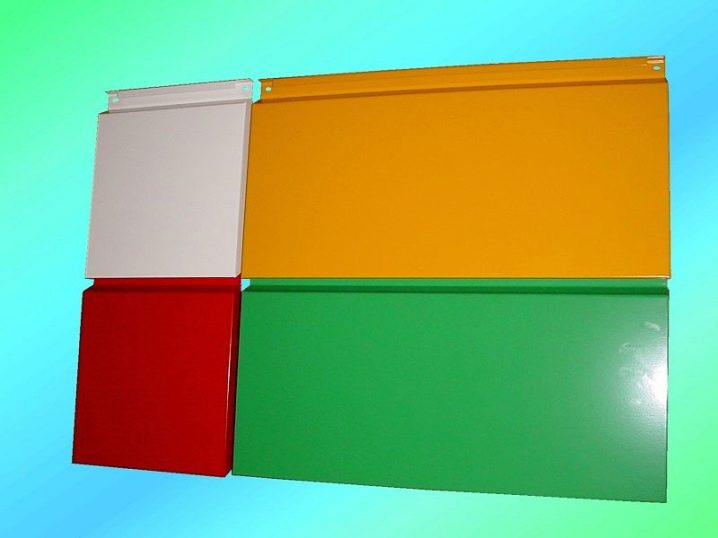
Steel
Galvanized steel is used as a production material, which gives the products hardness and strength. In addition, the elements are distinguished by an impressive weight. The color range of steel cassettes is quite diverse, so it is worth choosing products based on personal taste preferences. Such an advantage is due to the specifics of the production of the material, which involves covering the galvanized product with a polymer film having a wide palette of colors.

Aluminum
Cassettes made of aluminum have an acceptable weight, which does not affect the strength indicators of the products. The products are distinguished by their impressive dimensions - the cassettes are quite voluminous, due to which the time for installing products on the base of the building is reduced. The disadvantage of aluminum cassettes for facade cladding is their high cost in comparison with other types of these products. But high quality pays off with the cost of purchasing such a product.
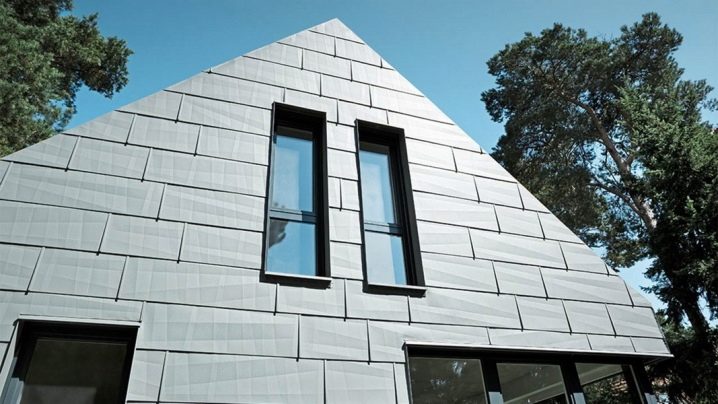
Composite
The weak point of such cassettes is their low strength, in comparison, for example, with aluminum counterparts. However, alloy cassettes are lightweight.Most often, facade composite cassettes are used to design low-rise structures, where the walls and foundation of the building are not designed for heavy loads. It is worth paying special attention to the fact that the assortment of cassettes can be represented by products made of alloys with a low level of resistance to temperature fluctuations.
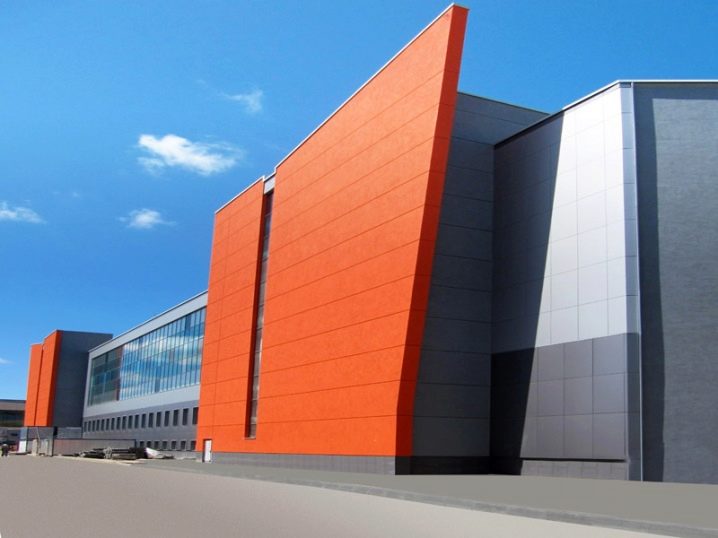
Shapes and sizes
The operational dimensions of the cassettes can be different, the selection of suitable products should be carried out based on the style and option of facade decoration, as well as taking into account the technological need. As a rule, the products have the following dimensions: the depth of the products is from 20 to 55 mm, the width of the horizontal and vertical joints varies from 5 to 55 mm. The height of the products can be 340-600 mm, the width - 150-4000 mm.

With regard to the shape of the cassettes, the individual elements are generally rectangular, although long panel strips having different widths are popular.
Finishing methods and stages of work
Each ventilated facade, the construction of which takes place using cassettes of any type, is an integral system.
It contains the following details:
- metal profiles;
- corners, they act as a fastener;
- windproof panel;
- fasteners;
- slopes with platbands and strips.
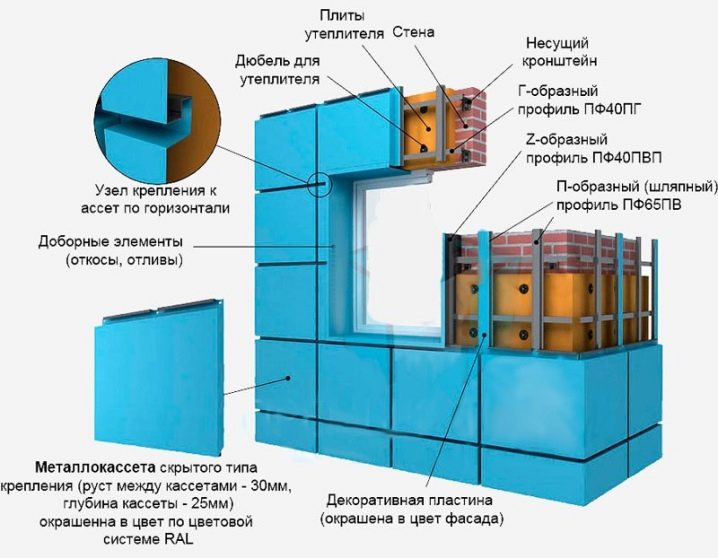
Regardless of the complexity of the structure of the building, which is planned to be faced with facade cassettes, the presence of the above components will make it possible to do the work in the shortest possible time.
Installation of products can be done in two ways:
- hidden fasteners;
- visible fasteners.
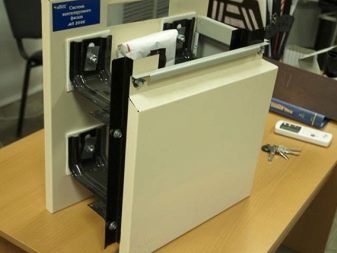
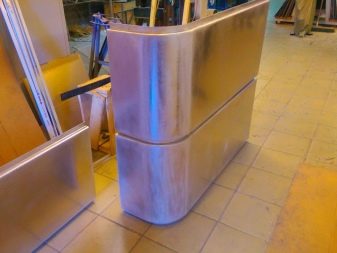
The decision regarding the choice of one or another installation option for cassettes should be based on the characteristics of the building and its geometry.
Experts consider the visible installation to be the simplest in terms of the technique of performing the work. The configuration of each individual element includes a kind of folded edges with a special hole. Self-tapping screws are screwed into it, fixing the product on the profile. This technique allows, if necessary, to replace a worn-out part without dismantling the entire structure. It is the folding parts of the cassette that are responsible for fixing the entire part. There is no need to use any equipment for work.
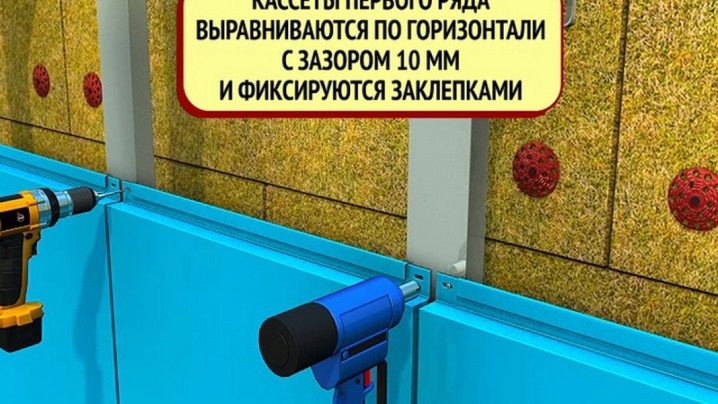
Concealed fasteners in their technology are a little more complicated than the option described above. But due to the application of this method, a flat surface of cassettes is formed on the facade of the building, where the connecting seams between the elements and the parts used for installation and fixation are not visually visible. Based on the mounting option, the front panel may differ slightly in its configuration, namely, the part will contain only one bent side. There is an edge on this part of the cassette. Its task is to fix the top and bottom elements to each other.
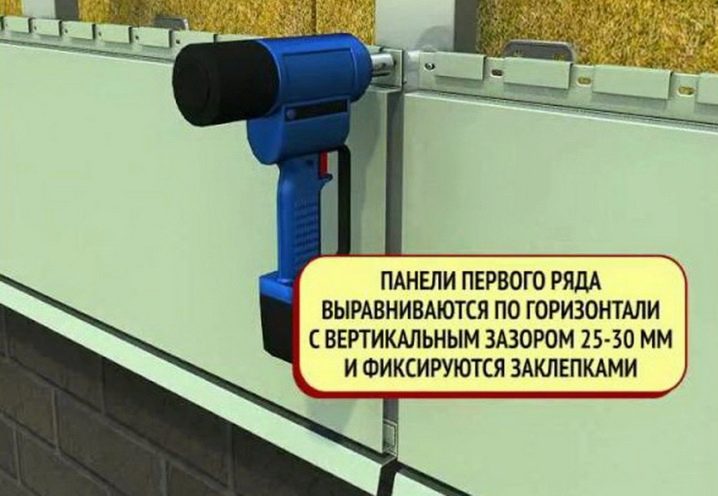
Cladding the walls of the building with facade cassettes includes the following steps:
- First of all, a crate from a profile is installed on the base of the house. It has a honeycomb type. If you carry out competent calculations of the height of the profiles, you can provide a good ventilation space between the wall and the cladding material.

- If necessary, a heat-insulating material is placed between the crate. Most builders recommend using mineral wool for these purposes, since it has a dense texture on top and a porous inner layer. In addition, during the execution of work on the exterior decoration of the facade of the house, it is necessary to take care of high-quality wind protection. For this, another additional layer of heat-insulating material is laid. This function is performed by membrane-type tissue. It is she who will be able to keep warm for a long time and protect the lower layer of the material from moisture. All materials are attached to the crate with dowels.
- After the above steps, you should start laying the waterproofing for the building.
- The last stage will be the installation of a special frame on which the facade cassettes will be attached.
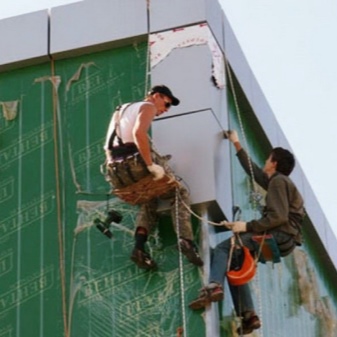
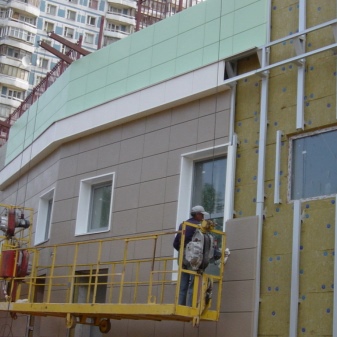
Helpful hints
In order to properly perform the cladding of the building, you should avoid common mistakes during the use of this material. For example, it is strictly forbidden to cut products during work using an abrasive or gas-flame tool. Even before purchasing materials, you should check the shelf life of the product and the date of its manufacture. The material, which has a polymer coating on the base with all components, which is in the original packaging, can be stored for no more than forty-five days from the date of shipment from production.

When buying material for public buildings, you need to know that additional installation on cladding from cassettes of various signboards is not allowed. For private households, the prohibition on installation to facade cassettes applies to the fastening of hinged canopies, antennas, etc. Only the constituent elements of the drainage system can be safely installed to the cassettes, which must be fixed to the supporting base that is not associated with the facade cladding.
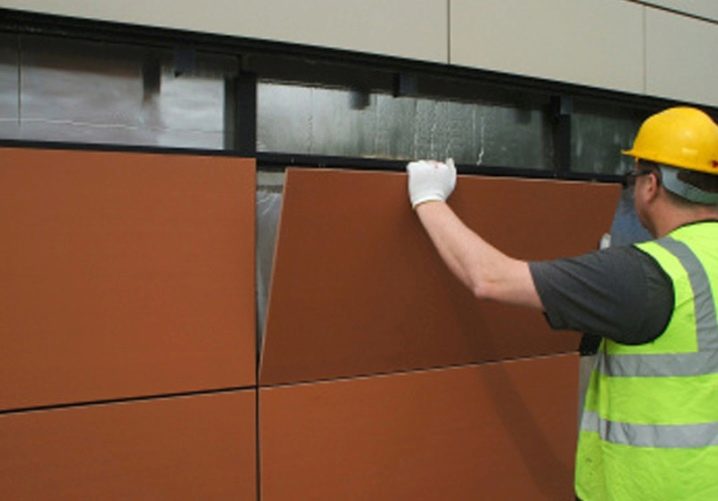
Purchased products require special storage conditions - before installation, the product must be kept in a packaging film, avoiding direct sunlight on the parts. Contact of the product with ultraviolet light can provoke changes in the composition of the adhesive, which will make it difficult to remove the film from the elements.
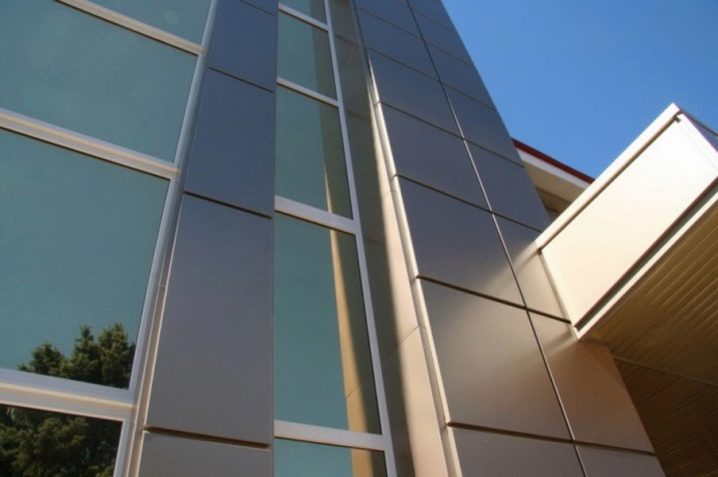
Care must be taken to protect the products from moisture that will drain from the roof; for this, the gutters and gutters must be in good condition.
Beautiful examples
Since the color scale of the material is quite diverse, it is possible to distinguish such a building from the total mass of structures without much difficulty. By using contrasting alternation of colors during installation, for example, light and dark shades that outline the correct geometry of the building, the structure is easy to see from afar. And the bright red details, highlighted in the overall design, in combination with the cold gray color, will add originality and attractiveness to the design, guaranteed to interest passers-by with such a bold finish.
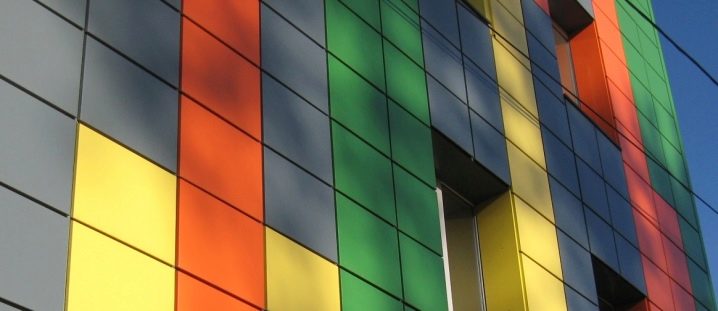
For information on how to mount facade cassettes, see the next video.













They bought from the manufacturer for the cladding of the store, they recommended metal cassettes.
The comment was sent successfully.